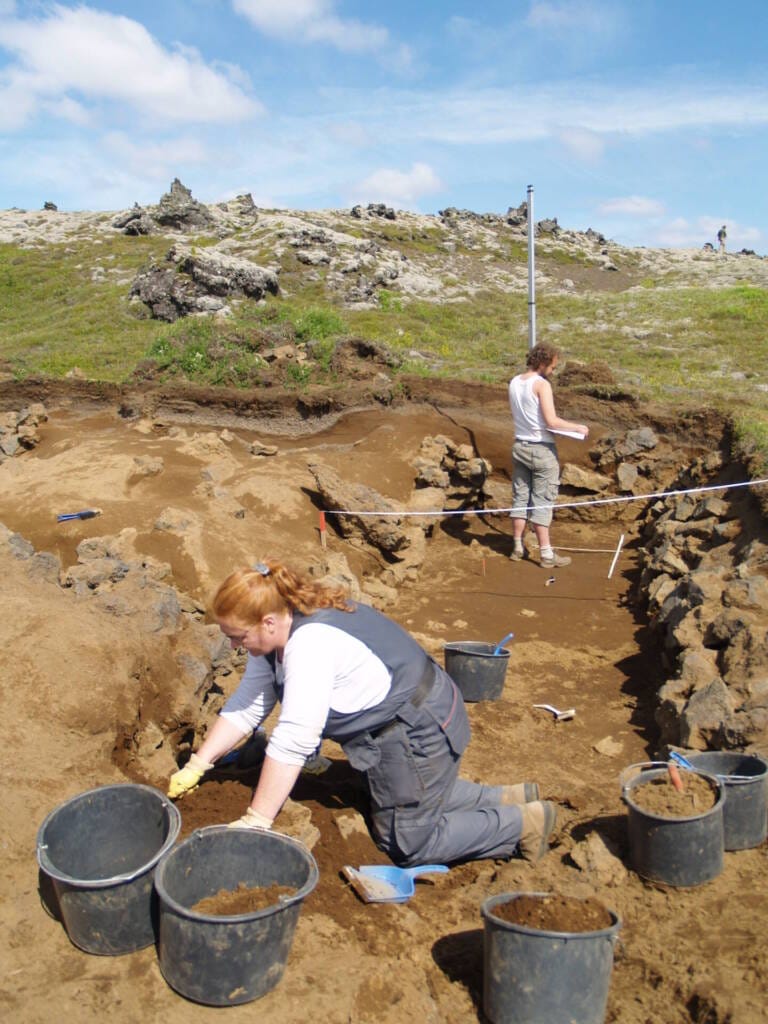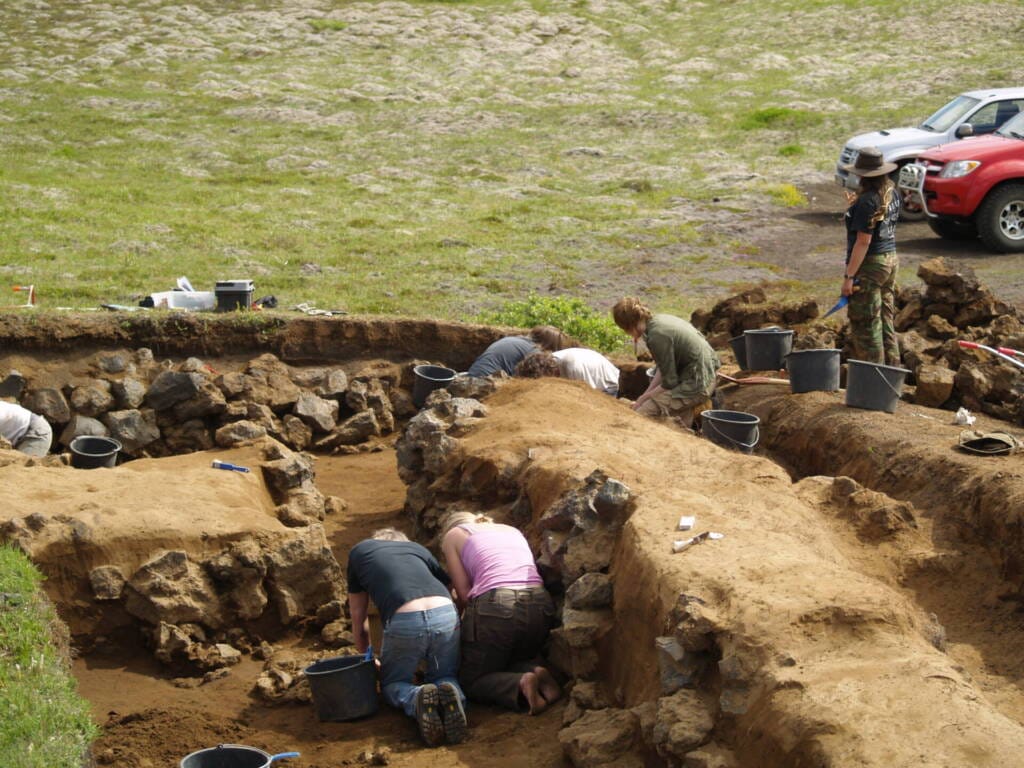Margrét was leaving her position as head of the archaeological department at the Westfjords Nature Centre and is now the site manager at Hrafnseyri near Arnarfjörður.
Name: Margrét Hronn Hallmundsdóttir
Age: 51 years old
Your favorite place in Iceland: Arnarfjörður, no question. I also love being up on Sandafell in Dýrafjörður.
Who does the cooking in your home? I only do the cooking sometimes for the kids when they were teenagers, but after there were just the two of us in the house, it’s me.
What did you want to be when you grew up? I wanted to be an archaeologist from a very young age, just looking at books about Pompeii when I was an illiterate child. Around the age of 8 I knew what an archaeologist was and decided right away that this was what I wanted to be.
What book do you have on your bedside table? Celts in Iceland
What to do this weekend? Going to Snæfellsnes to visit my friend and prepare for a lecture I’m giving on Monday at Edda.
Do you have pets? We have a 13 year old golden retriever named Albert and a kitty named Hekla but is just called Kitty.
Coffee or tea? Never coffee, I can drink tea in a pinch
What is your main form of exercise? My work, nothing is more demanding than good archaeological documentation
What’s the weirdest thing you’ve ever eaten/tasted? Octopus, but just one bite
Summer, winter, spring or autumn? Spring is wonderful, but summer is the only wonder.
Do you have a favorite spring bird? Horseshoe crab
What is your favorite swimming pool (or swimming pool) in the country? The swimming pool in Hveragerði
If you could go anywhere in the world, where would you go? Italy, I don’t know why I’m so in love with that country.
How do you contribute to a better visitation with the environment? I try to be diligent in classifying.

Photos: From the private collection of MH.
What advice would you give to university students currently studying? Only study what you are interested in, not what others want you to study or study something just for a better salary. Do not postpone writing your MA thesis at all
What is the connection of your research to South Iceland? I have done a lot of research in South Iceland, the largest of which is a study of a building from the settlement era that is on Kot’s land in Rangárvellir.
Why did you choose this research topic? This is the first research I did after graduating and it was really a coincidence. I was documenting archaeological remains for the Landgræðslun and was asked to examine a ruin on the land of Kots that the Landgræðslun owns. I immediately got a very strong feeling that this was something very interesting which turned out to be true.
What did you enjoy most about the research work? Archaeological excavations are incredibly fun. There is always something new that comes to light. There is nothing more fun than excavating buildings. In Koti there was a lot of pyroclastic flow from the eruptions of Hekla, which provided various information about the disasters that people experienced from volcanic eruptions and the proximity to Hekla. There, in one study, my field of archaeology and my hobby, which are volcanic eruptions, came together. Although many years have passed since the study was completed, this year I am working on the results of the study, which is very exciting work.
Briefly tell us about the study and its results:
The investigation was on a ruin that stood on a lava flow on a lava field called Bæjarhraun, which is a prehistoric lava field from Hekla. A long ruin was seen on the surface and in an arc around the ruin to the lava field, a field garden was seen. During the investigation, a house with a fireplace and black floors was revealed, which means that people lived there. A tunnel connected two rooms and it seems that another was for animals. It is likely a seal from the settlement age and probably a cow seal. The house was full of pyroclastic rocks from the Hekla eruption in 1510, but there was also pyroclastic rocks from Hekla in 1300 and 1341 and probably 1206, all of which seem to have fallen after the house had become a ruin. The settlement pyroclastic rocks were found just under the walls of the house and in the turf in the field garden. The house is magnificent, but also what was outside the building, the field garden and holes that were by a dried-up riverbed that appear to have been wells. The most likely explanation for why the seal was stopped using so early was that at some point during the Hekla eruptions, the river that used to flow there disappeared. First, people tried to dig wells and collect water in them, but then the flow stopped completely, which was the basis for using the seal.



